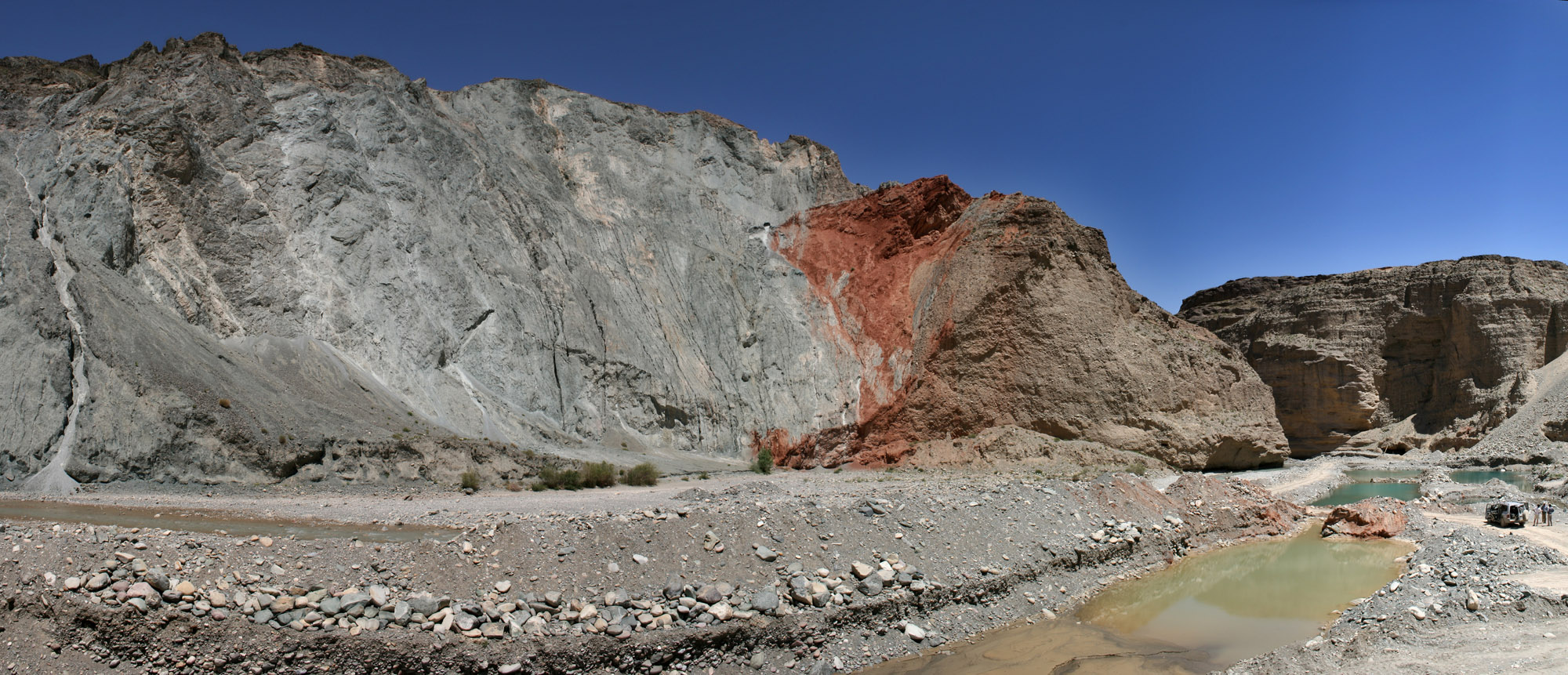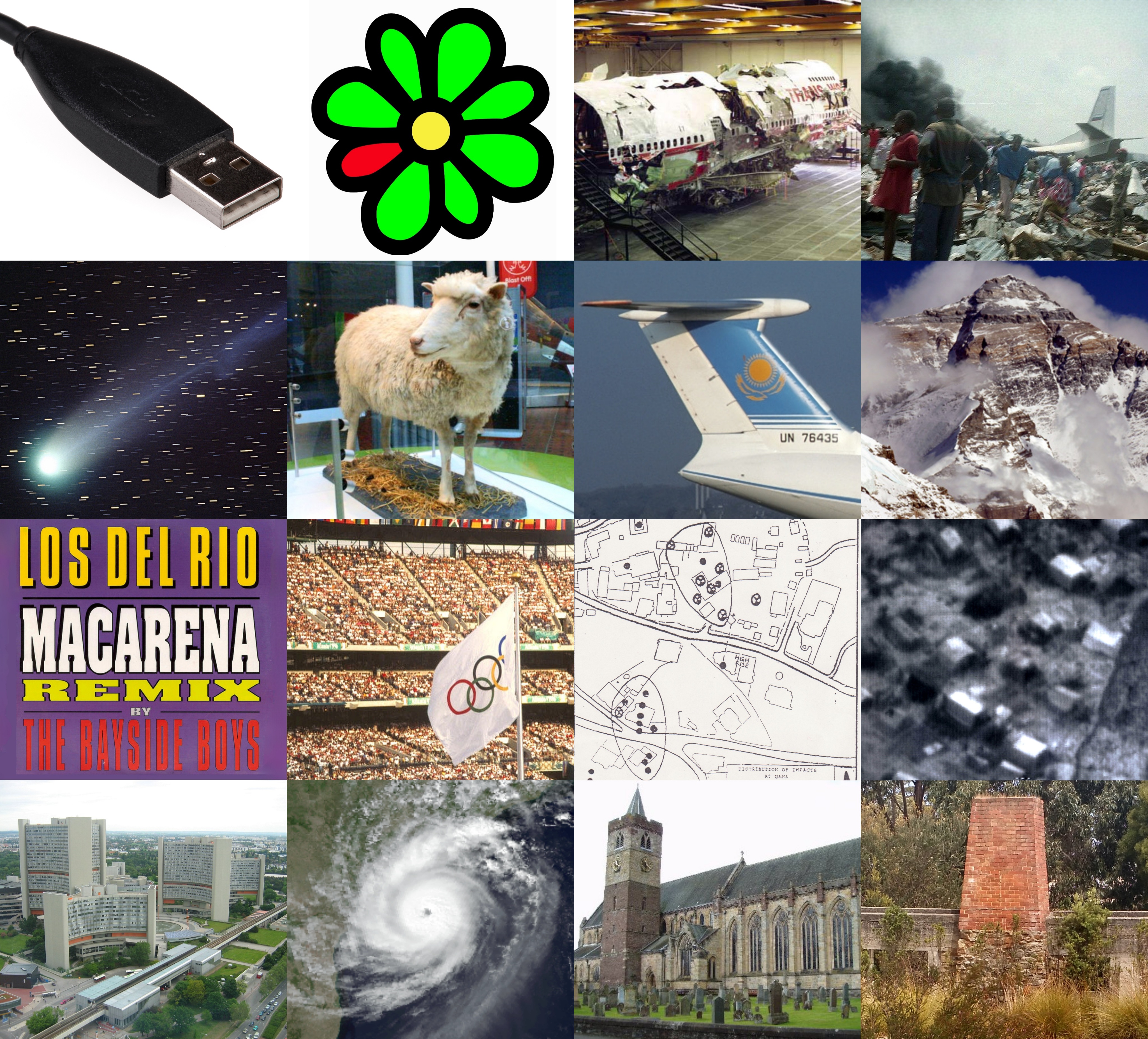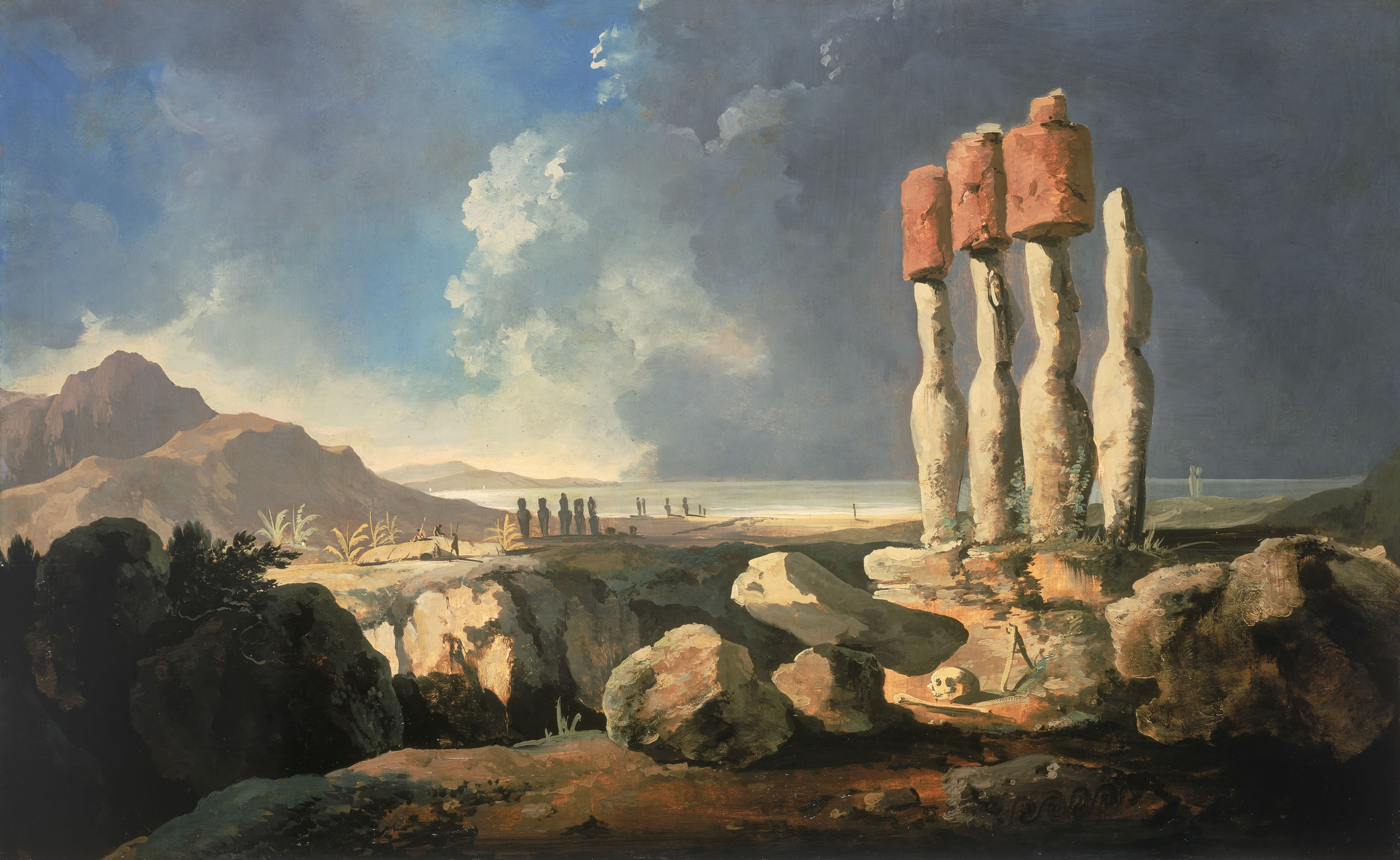|
1996 Chimbote Earthquake
The 1996 Chimbote earthquake occurred on February 21 at about 130 km off the coast of northern Peru, near the Peru–Chile Trench. The earthquake had a moment magnitude () of 7.5 and occurred at depth. Geology The mechanism inferred from data is a low-angle thrust of the Nazca plate, which is subducting beneath the South American plate. This earthquake occurred in an area where the Peru–Chile subduction zone is relatively quiet. Tsunami This earthquake was special in that it generated a disproportionally large tsunami. Earthquakes with slow rupture velocities are the most efficient tsunami generators, and the rupture velocity of this earthquake was classified as moderately slow (Newman and Okal, 1996). The tsunami affected the Peruvian coastal area from Pacasmayo, La Libertad to Callao. The straight-line distance between the two areas is about 590 km. The greatest runup value of the tsunami was 5.14 m, recorded at the port of Chimbote, located on the north sid ... [...More Info...] [...Related Items...] OR: [Wikipedia] [Google] [Baidu] |
Thrust Fault
A thrust fault is a break in the Earth's crust, across which older rocks are pushed above younger rocks. Thrust geometry and nomenclature Reverse faults A thrust fault is a type of reverse fault that has a dip of 45 degrees or less. If the angle of the fault plane is lower (often less than 15 degrees from the horizontal) and the displacement of the overlying block is large (often in the kilometer range) the fault is called an ''overthrust'' or ''overthrust fault''. Erosion can remove part of the overlying block, creating a ''fenster'' (or ''window'') – when the underlying block is exposed only in a relatively small area. When erosion removes most of the overlying block, leaving island-like remnants resting on the lower block, the remnants are called ''klippen'' (singular '' klippe''). Blind thrust faults If the fault plane terminates before it reaches the Earth's surface, it is called a ''blind thrust'' fault. Because of the lack of surface evidence, blind thrust fa ... [...More Info...] [...Related Items...] OR: [Wikipedia] [Google] [Baidu] |
Hilo
Hilo () is the largest settlement in and the county seat of Hawaii County, Hawaiʻi, United States, which encompasses the Island of Hawaiʻi, and is a census-designated place (CDP). The population was 44,186 according to the 2020 census. It is the fourth-largest settlement in the state of Hawaiʻi, the largest settlement in the state outside of Oahu, and the largest settlement in the state outside of the Greater Honolulu Area. Hilo is in the District of South Hilo. The city overlooks Hilo Bay and has views of two shield volcanoes, Mauna Loa, an active volcano, and Mauna Kea, a dormant volcano. The Hilo bayfront has been destroyed by tsunamis twice. The majority of human settlement in Hilo stretches from Hilo Bay to Waiākea-Uka, on the flanks of the volcanoes. Hilo is home to the University of Hawaii at Hilo, ʻImiloa Astronomy Center, as well as the Merrie Monarch Festival, a week-long celebration, including three nights of competition, of ancient and modern hula that ... [...More Info...] [...Related Items...] OR: [Wikipedia] [Google] [Baidu] |
Tsunami Earthquakes
A tsunami ( ; from , ) is a series of waves in a water body caused by the displacement of a large volume of water, generally in an ocean or a large lake. Earthquakes, volcanic eruptions and underwater explosions (including detonations, landslides, glacier calvings, meteorite impacts and other disturbances) above or below water all have the potential to generate a tsunami. Unlike normal ocean waves, which are generated by wind, or tides, which are in turn generated by the gravitational pull of the Moon and the Sun, a tsunami is generated by the displacement of water from a large event. Tsunami waves do not resemble normal undersea currents or sea waves because their wavelength is far longer. Rather than appearing as a breaking wave, a tsunami may instead initially resemble a rapidly rising tide. For this reason, it is often referred to as a tidal wave, although this usage is not favoured by the scientific community because it might give the false impression of a causa ... [...More Info...] [...Related Items...] OR: [Wikipedia] [Google] [Baidu] |
1990s Tsunamis
Year 199 ( CXCIX) was a common year starting on Monday of the Julian calendar. At the time, it was sometimes known as year 952 ''Ab urbe condita''. The denomination 199 for this year has been used since the early medieval period, when the Anno Domini calendar era became the prevalent method in Europe for naming years. Events By place Roman Empire * Mesopotamia is partitioned into two Roman provinces divided by the Euphrates, Mesopotamia and Osroene. * Emperor Septimius Severus lays siege to the city-state Hatra in Central-Mesopotamia, but fails to capture the city despite breaching the walls. * Two new legions, I Parthica and III Parthica, are formed as a permanent garrison. China * Battle of Yijing: Chinese warlord Yuan Shao defeats Gongsun Zan. Korea * Geodeung succeeds Suro of Geumgwan Gaya, as king of the Korean kingdom of Gaya (traditional date). By topic Religion * Pope Zephyrinus succeeds Pope Victor I, as the 15th pope. Births Valerian ... [...More Info...] [...Related Items...] OR: [Wikipedia] [Google] [Baidu] |
Earthquakes In Peru
Earthquakes in Peru are common occurrences as the country is located in a seismic zone. The interface between the Nazca plate, Nazca and South American plate, South American tectonic plates is located near the Peruvian coast. The South American plate is moving over the Nazca plate at a rate of per year. This earthquakes occur as thrust faulting on the interface between the two plates, with the South American plate moving towards the sea over the Nazca plate. The same process has caused the rise of the Andes mountain range and the creation of the Peru–Chile Trench, as well as volcanism in the Peruvian highlands. Geology of Peru The oldest rocks in Peru date to the Precambrian and are more than two billion years old. Along the southern coast, granulite and charnockite shows reworking by an ancient orogeny mountain-building event. Situated close to the Peru-Chile Trench, these rocks have anomalously high strontium isotope ratios, which suggest recent calc-alkaline volcanism. In ... [...More Info...] [...Related Items...] OR: [Wikipedia] [Google] [Baidu] |
1996 In Peru
1996 was designated as: * International Year for the Eradication of Poverty Events January * January 8 – A Zairean cargo plane crashes into a crowded market in the center of the capital city of the Democratic Republic of the Congo, Kinshasa, killing around 300 people. * January 9– 20 – Serious fighting breaks out between Russian soldiers and rebel fighters in Chechnya. * January 11 – Ryutaro Hashimoto, leader of the Liberal Democratic Party, becomes Prime Minister of Japan. * January 13 – Italy's Prime Minister, Lamberto Dini, resigns after the failure of all-party talks to confirm him. New talks are initiated by President Oscar Luigi Scalfaro to form a new government. * January 14 – Jorge Sampaio is elected President of Portugal. * January 16 – President of Sierra Leone Valentine Strasser is deposed by the chief of defence, Julius Maada Bio. Bio promises to restore power following elections scheduled for February. * January 19 ** Th ... [...More Info...] [...Related Items...] OR: [Wikipedia] [Google] [Baidu] |
1996 Earthquakes
1996 was designated as: * International Year for the Eradication of Poverty Events January * January 8 – A Zairean cargo plane crashes into a crowded market in the center of the capital city of the Democratic Republic of the Congo, Kinshasa, killing around 300 people. * January 9– 20 – Serious fighting breaks out between Russian soldiers and rebel fighters in Chechnya. * January 11 – Ryutaro Hashimoto, leader of the Liberal Democratic Party, becomes Prime Minister of Japan. * January 13 – Italy's Prime Minister, Lamberto Dini, resigns after the failure of all-party talks to confirm him. New talks are initiated by President Oscar Luigi Scalfaro to form a new government. * January 14 – Jorge Sampaio is elected President of Portugal. * January 16 – President of Sierra Leone Valentine Strasser is deposed by the chief of defence, Julius Maada Bio. Bio promises to restore power following elections scheduled for February. * January 19 ... [...More Info...] [...Related Items...] OR: [Wikipedia] [Google] [Baidu] |
International Seismological Centre
The International Seismological Centre (ISC) is a non-governmental, nonprofit organisation charged with the final collection, definitive analysis and publication of global seismicity. The ISC was formed in 1964 as an international organisation independent of national governments that would carry on the work of the International Seismological Summary in collecting and analyzing seismic data from around the world, and particularly to handle increased flow of data from the World-Wide Standard Seismograph Network (WWSSN), also established that year. The ISC considers its prime task to be the collection and re-analysis of all available earthquake seismic date in order to produce definitive data on earthquakes. The ISC's catalog is considered "the most complete and authoritative final depository of global earthquake parameter data." Purpose The main scientific goal of the centre is the definitive compilation of earthquake information and the readings on which they are based. Collect ... [...More Info...] [...Related Items...] OR: [Wikipedia] [Google] [Baidu] |
List Of Earthquakes In Peru
Earthquakes in Peru are common occurrences as the country is located in a seismic zone. The interface between the Nazca and South American tectonic plates is located near the Peruvian coast. The South American plate is moving over the Nazca plate at a rate of per year. This earthquakes occur as thrust faulting on the interface between the two plates, with the South American plate moving towards the sea over the Nazca plate. The same process has caused the rise of the Andes mountain range and the creation of the Peru–Chile Trench, as well as volcanism in the Peruvian highlands. Geology of Peru The oldest rocks in Peru date to the Precambrian and are more than two billion years old. Along the southern coast, granulite and charnockite shows reworking by an ancient orogeny mountain-building event. Situated close to the Peru-Chile Trench, these rocks have anomalously high strontium isotope ratios, which suggest recent calc-alkaline volcanism. In the Eastern Cordillera of Peru, Pr ... [...More Info...] [...Related Items...] OR: [Wikipedia] [Google] [Baidu] |
List Of Earthquakes In 1996 ...
This is a list of earthquakes in 1996. Only earthquakes of magnitude 6 or above are included, unless they result in damage or casualties, or are notable for some other reason. All dates are listed according to UTC time. By death toll By magnitude By month January February March April May June July August September October November December List * 1996 Sulawesi earthquake (M7.9, Jan 1) * 1996 Lijiang earthquake (M7.0, Feb 3) * 1996 Biak earthquake (M8.1, Feb 17) * 1996 Chimbote earthquake (M7.4, Feb 21) * 1996 Baotou earthquake (M6.4, May 3) * 1996 Nazca earthquake (M7.5, Nov 12) References {{Earthquakes in 1996 * 1996 1996 1996 was designated as: * International Year for the Eradication of Poverty Events January * January 8 – A Zairean cargo plane crashes into a crowded market in the center of the capital city of the Democratic Republic of the Congo ... [...More Info...] [...Related Items...] OR: [Wikipedia] [Google] [Baidu] |
2001 Southern Peru Earthquake
The 2001 southern Peru earthquake occurred at 20:33:15 UTC (15:33:15 local time) on June 23 with a moment magnitude of 8.4 and a maximum Mercalli intensity of XII (''Extreme''). The quake affected the Peruvian regions of Arequipa, Moquegua and Tacna. It was the most devastating earthquake in Peru since the catastrophic 1970 Ancash earthquake and globally the largest earthquake since the 1965 Rat Islands earthquake. Tectonic setting Peru lies above the destructive boundary where the Nazca plate is being subducted beneath the South American plate along the line of the Peru–Chile Trench. The two plates are converging towards each other at a rate of about 78mm or 3 inches per year. Southwestern Peru has a history of very large earthquakes. The June 23 shock originated just southeast of the source of a magnitude 7.7 earthquake that occurred in 1996, and it appears to have involved rupture of part of the plate boundary segment that produced an earthquake of magnitude approximately 9. ... [...More Info...] [...Related Items...] OR: [Wikipedia] [Google] [Baidu] |
Easter Island
Easter Island (, ; , ) is an island and special territory of Chile in the southeastern Pacific Ocean, at the southeasternmost point of the Polynesian Triangle in Oceania. The island is renowned for its nearly 1,000 extant monumental statues, called ''moai'', which were created by the early Rapa Nui people. In 1995, UNESCO named Easter Island a World Heritage Site, with much of the island protected within Rapa Nui National Park. Experts differ on when the island's Polynesian inhabitants first reached the island. While many in the research community cited evidence that they arrived around the year 800, a 2007 study provided compelling evidence suggesting their arrival was closer to 1200. The inhabitants created a thriving and industrious culture, as evidenced by the island's numerous enormous stone ''moai'' and other artifacts. Land clearing for cultivation and the introduction of the Polynesian rat led to gradual deforestation. By the time of European arrival in 1722, the i ... [...More Info...] [...Related Items...] OR: [Wikipedia] [Google] [Baidu] |





